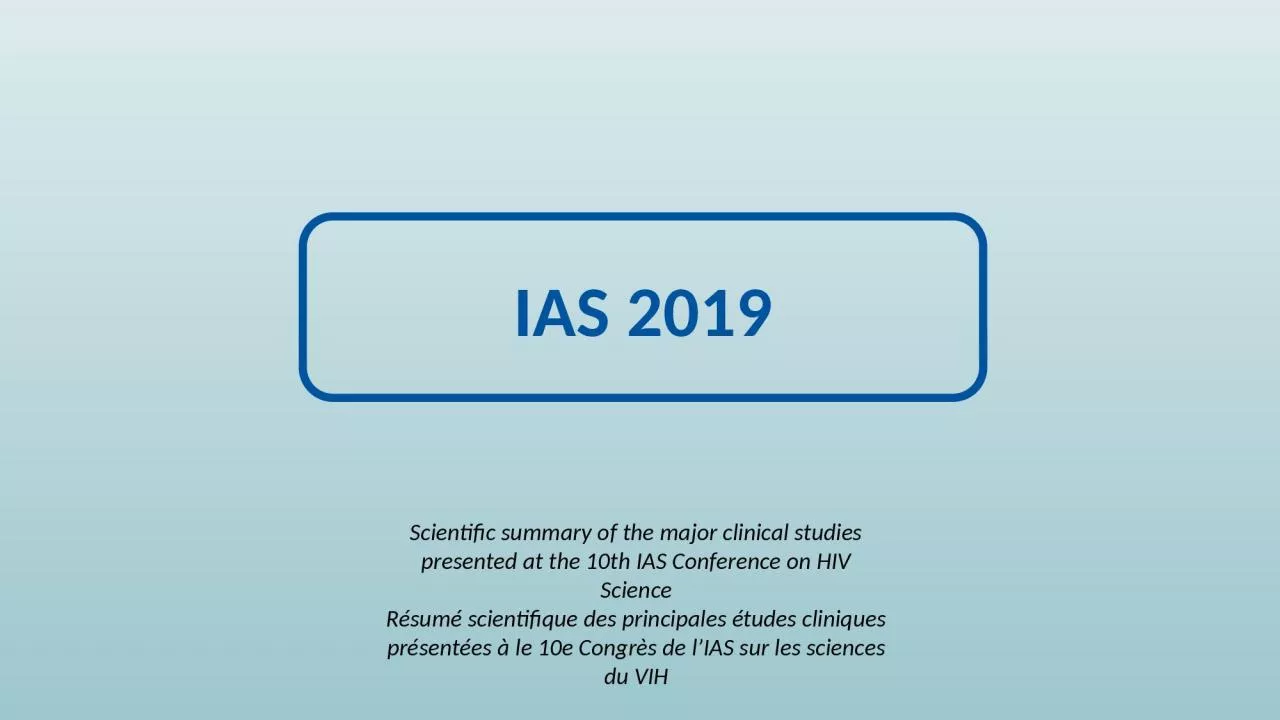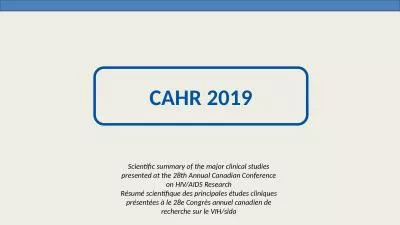PPT-IAS 2019 Scientific summary of the major clinical studies presented at the 10th IAS Conference
Author : claire | Published Date : 2024-02-03
Résumé scientifique des principales études cliniques présentées à le 10e Congrès de lIAS sur les sciences du VIH CAHR is pleased to provide this scientific
Presentation Embed Code
Download Presentation
Download Presentation The PPT/PDF document "IAS 2019 Scientific summary of the major..." is the property of its rightful owner. Permission is granted to download and print the materials on this website for personal, non-commercial use only, and to display it on your personal computer provided you do not modify the materials and that you retain all copyright notices contained in the materials. By downloading content from our website, you accept the terms of this agreement.
IAS 2019 Scientific summary of the major clinical studies presented at the 10th IAS Conference: Transcript
Download Rules Of Document
"IAS 2019 Scientific summary of the major clinical studies presented at the 10th IAS Conference"The content belongs to its owner. You may download and print it for personal use, without modification, and keep all copyright notices. By downloading, you agree to these terms.
Related Documents














